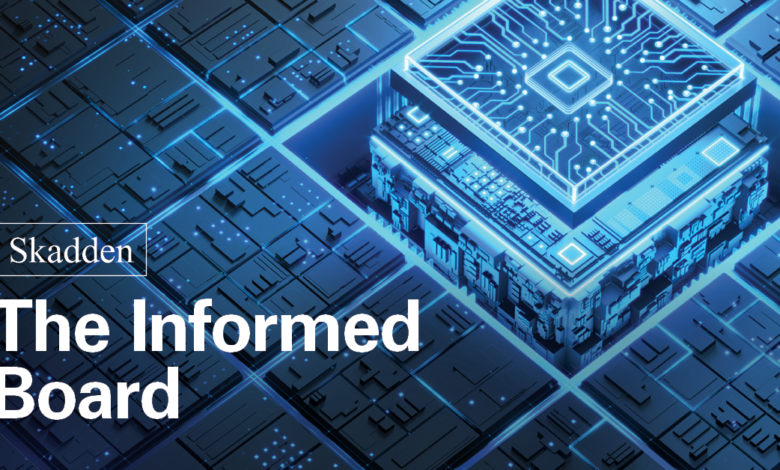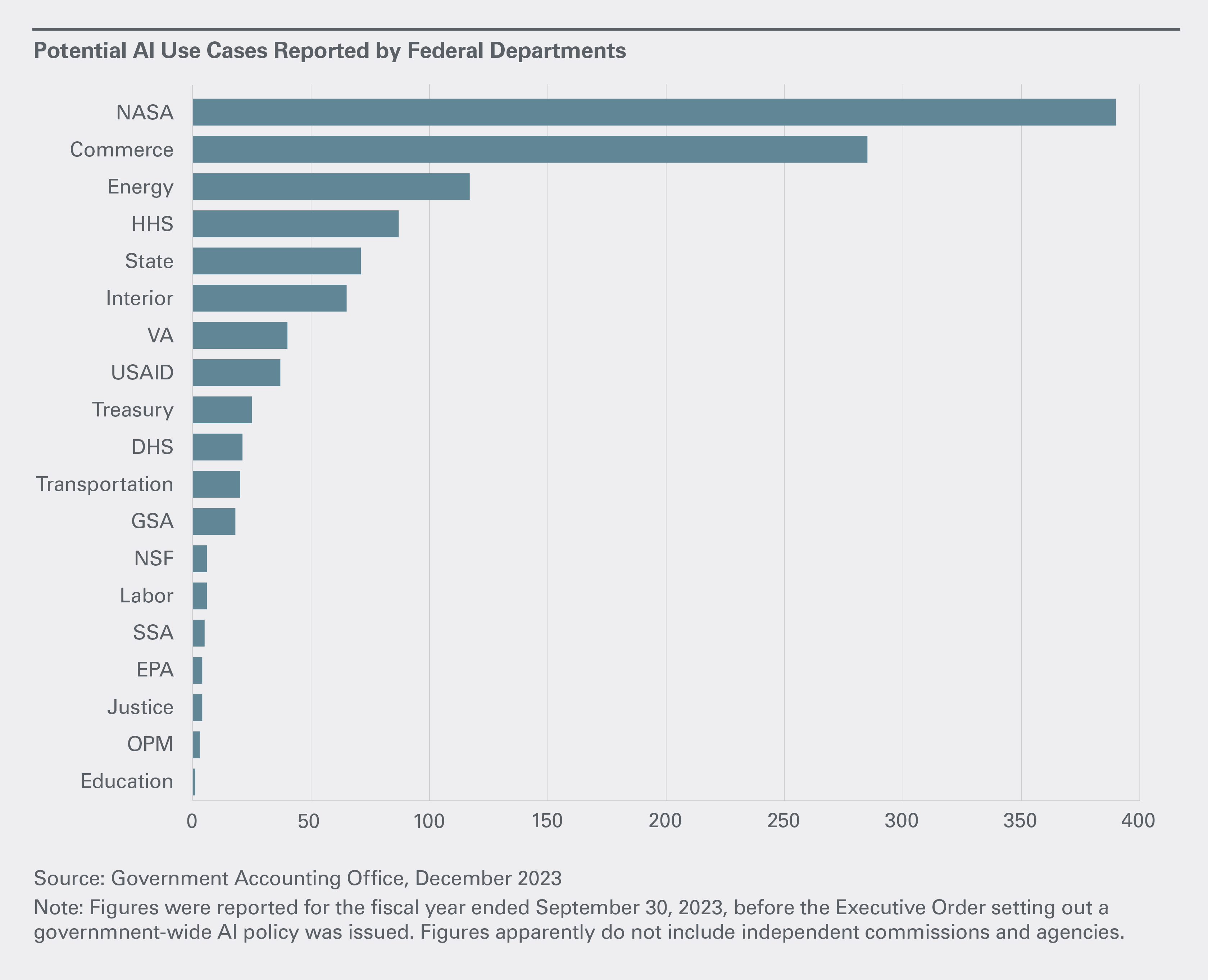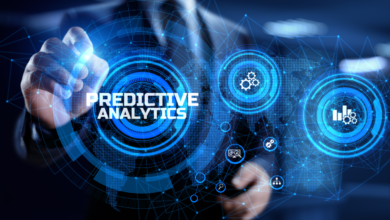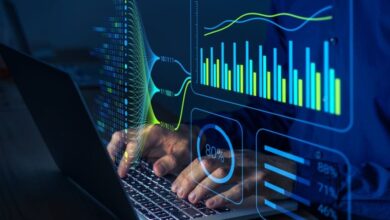AI-Enabled Compliance: Keeping Pace With the Feds | Insights

Key Points
- The U.S. government is rapidly expanding its use of AI and other data analytics tools to detect wrongdoing.
- To keep up, companies need to adopt similar technology as part of their compliance programs.
- Data tools are now available from a variety of vendors to help flag high-risk business activities and continuously monitor information for possible violations, and these can earn the company credit in the event of an enforcement action.
- AI technology can also be used after a government investigation is launched to quickly assess a company’s potential exposure.
The potential for artificial intelligence (AI) to transform business has commanded enormous attention over the past year. Little noted, however, is the U.S. government’s increasing — and increasingly sophisticated — use of AI to spot wrongdoing. Various arms of government are now employing AI tools to flag everything from earnings manipulation to bid-rigging and imports made with forced labor.
With the tools now at the government’s disposal, the capacity to manage and analyze data has become a cornerstone of effective corporate compliance programs, both so that companies are not blindsided by enforcement agencies that have identified problems the companies could have spotted first, and to demonstrate that they have robust systems to detect potential violations, which can be a mitigating factor if the government seeks penalties.
Where AI Is Being Used by the Government
Some branches of the federal government have already been using data analysis tools for years. But a broad October 2023 executive order from the White House outlined a government-wide AI policy with detailed directives to various departments, and some of those involving enforcement are now being acted upon.
Here are some of the existing and upcoming applications of AI in enforcement that are likely to have the greatest impact on businesses:
The Securities and Exchange Commission (SEC): For over a decade, the SEC has harnessed AI and other data analytics to detect trends in the thousands of tips, complaints and referrals it receives and to uncover potential insider trading.
In addition, in 2018 it launched the Earnings Per Share (EPS) Initiative, which uses risk-based data analytics to uncover potential accounting and disclosure violations stemming from earnings management and other improper practices. That has resulted in at least six enforcement actions, most of which have involved fraud charges and significant penalties.
Department of Justice (DOJ): Three years ago the Procurement Collusion Strike Force in the DOJ’s Antitrust Division established a program to develop data tools to identify suspicious bidding patterns, and the Criminal Division recently touted the use of data to identify potential wrongdoing involving foreign corruption.
Department of Homeland Security (DHS): The DHS plans to hire 50 AI experts in 2024 and will use the technology to, among other things, police supply chains to curb the import of goods made with forced labor and to prevent imports of fentanyl and precursor chemicals. AI technology will also be used to combat AI-related theft of intellectual property.
Department of Health and Human Services: AI tools are being used to detect counterfeit pharmaceuticals and medical devices, as well as Medicare and Medicaid fraud, waste and abuse.
Environmental Protection Agency: An experimental AI model has been tested to improve the detection rate of hazardous waste violations during site inspections.
Two Reasons To Consider Adopting AI for Compliance
The first reason to employ AI technology is that it can greatly enhance a company’s ability to ensure compliance and identify possible violations.
The second reason is that the government expects it. The DOJ is “going to double down on these efforts … to identify additional misconduct that may otherwise have gone undetected,” Assistant Attorney General Nicole Argentieri said recently. “Just as we are upping our game when it comes to data analytics, we expect companies to do the same.”
The importance of adopting these tools has only been heightened by the emphasis the DOJ has placed since 2022 on the role of voluntary self-disclosure of possible corporate misconduct. The new technology can help businesses to uncover possible wrongdoing before the government does, allowing self-disclosure, and demonstrating a company’s commitment to rigorous compliance — factors the DOJ has repeatedly stated will earn the company credit if the DOJ seeks to impose penalties.
For instance, in the DOJ’s Criminal Division, prosecutors are instructed to assess in detail whether compliance programs are “based upon continuous access to operational data and information across functions.” And officials have cited a recent settlement involving the Foreign Corrupt Practices Act where the DOJ viewed positively the company’s use of data analytics for monitoring and measuring the effectiveness of its compliance program.
“Just as we are upping our game when it comes to data analytics, we expect companies to do the same.” — Assistant Attorney General Nicole Argentieri
What Companies Can Do: The Rise of Suptech
Fortunately, supervisory technology (suptech) — machine-learning technology that lessens the burden of complying with or supervising compliance with regulatory requirements — is revolutionizing compliance. There are many vendors developing these products, which can be implemented using a company’s existing data sources.
Strategies that companies might consider adopting include:
- Predictive compliance analytics. These tools can continuously assess and update the risk profiles of various corporate activities — from foreign dealings to procurement processes — and help identify patterns like those the DOJ’s Procurement Collusion Strike Force might look for, enabling companies to address potential issues proactively. This can be paired with a real-time, AI-driven compliance dashboard for continuous monitoring, so that companies can swiftly identify and rectify potential breaches.
- AI-enhanced whistleblower systems. Advanced platforms to receive whistleblower complaints that prioritize and anonymize reports not only encourage a culture of integrity but also enable early detection and self-reporting of issues to regulators.
- AI-assisted management of regulatory changes. AI systems dedicated to tracking and analyzing regulatory changes can help ensure that companies remain ahead of compliance requirements.
In the event of a government investigation, the adoption of these will serve as evidence of a diligent, data-informed approach to compliance, potentially mitigating penalties.
Using AI To Navigate Investigations
In the event of a government investigation, AI tools can help a company determine early on its degree of exposure. Such tools can process vast amounts of data at speeds and depths impossible for human investigators to perform — sifting through years of transactional data, for instance, to identify anomalies that may indicate irregular payments such as bribes or unauthorized disbursements. By learning from historical data, these systems can flag transactions that deviate from established patterns within hours, not weeks.
AI tools can also analyze enormous repositories of emails, documents and text messages to predict their relevance to an ongoing investigation.
This targeted approach allows companies to get preliminary answers to threshold questions about an investigation.
Limitations
There are some caveats. Integrating new technologies with existing systems presents significant challenges, including compatibility issues and the need for training and change management. Companies must also ensure that the technologies they deploy comply with data privacy protections and other laws.
In addition, the underlying code may become stale, or a typo in the code could set an unwanted parameter or limit. As a result, human oversight and ownership are still critical. One can expect regulators to scrutinize the algorithm or model of any compliance program in case of an investigation.
Governance Priority: a Proactive Stance on Compliance
As sophisticated AI-enabled regulatory scrutiny intensifies, compliance technology has transitioned from being a supplementary tool to being a central pillar of corporate governance.
By employing advanced tools, companies can enhance their ability to stay within the law, and position themselves to address problems proactively in the event of a possible violation and improve their regulatory outcomes.
Federal Government Explores Hundreds of Potential Uses for AI |
|---|
|
Federal government departments reported more than 1,200 potential uses for artificial intelligence within their remits in response to a survey by the General Accounting Office released in December 2023, and they said that AI was already being used for 228 purposes. Many of the possible applications — by the National Aeronautics and Space Administration (NASA) and Department of Commerce, for instance — involve scientific research. But other departments cited potential uses for enforcement purposes. The responses were as of September 30, 2023, a month before the White House issued its 20,000-word Executive Order with specific mandates to departments on AI uses. |

View other articles from this issue of The Informed Board
See all the editions of The Informed Board
This memorandum is provided by Skadden, Arps, Slate, Meagher & Flom LLP and its affiliates for educational and informational purposes only and is not intended and should not be construed as legal advice. This memorandum is considered advertising under applicable state laws.



